The High Cost of Low Leverage in Supplier Negotiations
How Procurement Teams Can Regain Control in Supplier Negotiations
In procurement, leverage isn’t a buzzword—it’s survival.
It’s the difference between dictating outcomes or inheriting them. It’s the line between proactive procurement leadership and firefighting under pressure. And most importantly, it’s what separates high-performing commercial teams from those stuck explaining budget overruns and rigid contracts that no longer fit the business.
When you lack leverage, you don’t just lose a negotiation—you lose control. You’re locked into overpriced agreements, stuck with inflexible terms, and dragged through lengthy negotiations that eat up time, energy, and trust.
But here’s the truth: Leverage is not gifted by suppliers. It is built—deliberately, strategically, and consistently.
Below, I’ve outlined five of the most critical leverage-killers facing procurement professionals today, along with actionable strategies to overcome them.
CHALLENGE 1: No Visibility Into Fair Market Pricing
You’ve received a renewal quote from your SaaS provider. It’s up 12%—with no clear justification.
You turn to internal records… but they don’t reflect current market conditions. There’s no recent benchmark. No competitor data. No leverage.
Sound familiar? You’re not alone.
Lack of pricing visibility is one of the most persistent weaknesses in procurement. It allows suppliers to anchor discussions on their terms, padding margins under the cover of “market dynamics.”
PRACTICAL STRATEGY: Run a Mini-RFP or Market Test
You don’t need a full tender process to regain control. A mini-RFP—where you invite 2–3 comparable suppliers to quote for the same scope—can reveal powerful insights:
-
Whether your current supplier’s pricing is still competitive
-
What value-adds or concessions are standard in today’s market
-
How hard your current supplier is (or isn’t) working to retain your business
Once you’ve gathered these responses, return to your incumbent with:
- A clear picture of the pricing landscape
- Evidence that you’re informed and prepared
- A proposal to include a mid-term price review clause—especially if you renew for multiple years
This strategy doesn’t threaten—it signals readiness. It says: “We’d like to keep working with you, but not at any price.”
And that alone can move the negotiation back into your control.
CHALLENGE 2: Protracted Contract Negotiations Waste Time and Slow the Business
Here’s the scenario: the supplier sends over a dense, 20-page MSA. Legal, compliance, and finance are all looped in. Weeks pass. Feedback trickles in. Priorities shift. And suddenly, a straightforward negotiation becomes a six-week internal obstacle course.
Meanwhile, strategic sourcing is sidelined, stakeholders grow impatient, and the business just wants it done.
PRACTICAL STRATEGY: Create a Negotiation Prep Pack
Before you even enter a negotiation, create clarity on your own side. Build a simple but powerful negotiation brief, including:
-
Commercial Objectives: What are we actually trying to achieve? Cost savings, flexibility, value-adds?
-
Pre-Approved Fallbacks: Which terms can be traded? What’s negotiable?
-
Non-Negotiables: Compliance clauses, security terms, legal restrictions—what’s off the table?
-
Escalation Paths: Who has final approval authority? How will we resolve internal disputes?
This doesn’t just speed up negotiations—it shifts the dynamic.
Suppliers sense when buyers are aligned. When your team shows up with a unified front, decisions are made faster, concessions are more deliberate, and negotiations stay focused.
Internal confusion is a hidden cost. Clarity is leverage.
CHALLENGE 3: Inflexible Contracts That Can’t Adapt to Business Change
Imagine this: You’ve signed a 3-year contract for 500 software seats. But 14 months later, headcount drops, projects shift, and only 320 licences are needed. The rest? Wasted budget. Locked in.
Rigid contracts are one of the most expensive consequences of poor leverage—and they often result from short-sighted negotiation.
PRACTICAL STRATEGY: Build Flexibility Into Commercial Terms
You can future-proof contracts by negotiating in flexibility from the start:
-
Volume-Based Pricing Tiers: Structure pricing by usage ranges (e.g. 100–200 users, 201–300). Pay only for what’s needed.
-
Step-Down Clauses: Trigger automatic pricing adjustments when usage or scope drops significantly—due to reorgs, budget cuts, or project delays.
-
Re-Opener Clauses: Schedule formal review points (e.g. after 12 months) to reassess pricing based on performance or business changes.
Here’s the secret: flexibility isn’t a sign of weakness. It’s a sign of partnership.
Present these clauses as risk-sharing mechanisms. They show foresight, maturity, and a long-term view that responsible suppliers often respect.
CHALLENGE 4: Suppliers Arrive With Full Deal Teams—You’re Negotiating Solo
You walk into the negotiation. Across from you: a pricing analyst, a commercial director, a solution consultant, and legal counsel.
On your side? Just you. Maybe a stakeholder or two—if they can make the call.
PRACTICAL STRATEGY: Control the Agenda and Use a Structured Framework
When you lack numbers, rely on structure.
Start by circulating a pre-read pack before the first meeting. Include:
-
Key objectives
-
Expected timelines
-
Evaluation criteria
-
Clarifying questions
Then, during the negotiation:
-
Stick to a clear agenda. Don’t let the supplier sidetrack you with demos or hypotheticals.
-
Request itemised cost breakdowns to unpack bundled pricing.
-
Insist on follow-up summaries in writing—ensuring clarity and accountability.
This structure signals confidence. It says: “We’ve done this before. We know where we’re going. Let’s keep this focused.”
Suppliers treat structured buyers differently. They see discipline. And discipline, in negotiation, is leverage.
CHALLENGE 5: Disconnected Systems Lead to Missed Opportunities and Last-Minute Panic
Your supplier data is scattered across inboxes, spreadsheets, and folders. Renewal dates sneak up. Contracts are hard to find. And instead of strategic planning, you’re stuck reacting.
This is the silent killer of procurement performance.
PRACTICAL STRATEGY: Build a Lightweight Supplier Intelligence Hub
You don’t need an expensive procurement suite to get organised.
Start with a shared workspace—Google Sheets, Notion, SharePoint—whatever works for your team. Track the basics:
-
Supplier name and category
-
Contract start/end/renewal dates
-
Commercial terms summary
-
Pricing model
-
Escalation clauses and performance metrics
-
Previous negotiation notes and pricing history
Then: schedule quarterly reviews to identify renewals 60–90 days out. This gives you time to:
-
Benchmark market rates
-
Review performance
-
Re-negotiate with a plan, not a panic
This one small shift can prevent hundreds of thousands in avoidable spend—because the real cost of fragmentation is lost opportunity.
Final Thoughts: Leverage Is Not Aggression—It’s Preparation
We need to redefine what it means to “negotiate hard.”
It’s not about playing tough, stalling on price, or threatening to walk. It’s about doing the hard work in advance—gathering data, aligning stakeholders, building flexibility, and knowing exactly what you’re solving for.
When procurement teams do this well, they stop reacting and start shaping supplier relationships.
You move from price taker to value shaper. From operational function to commercial force.
That’s the true power of leverage. And it’s within your reach.
Want to go further?
The BNA Procurement Negotiation Training is designed for professionals ready to take control—of pricing, contracts, and outcomes. It’s not about learning negotiation theory. It’s about building real, applied commercial power.
Recent Posts
The Contrast Principle in Procurement Negotiation
In high-stakes procurement, perception is leverage. This article explores how elite buyers use the contrast principle to frame negotiations, control supplier expectations, and...
Mastering Procurement Negotiations with Loss Aversion
In today’s procurement landscape, price cuts and supplier collaboration are no longer enough to drive meaningful results. This article explores how procurement professionals...
The High Cost of Low Leverage in Supplier Negotiations
Procurement teams don’t lose negotiations in the room—they lose them in the preparation. This article explores five leverage-killing challenges and offers practical, actionable...


